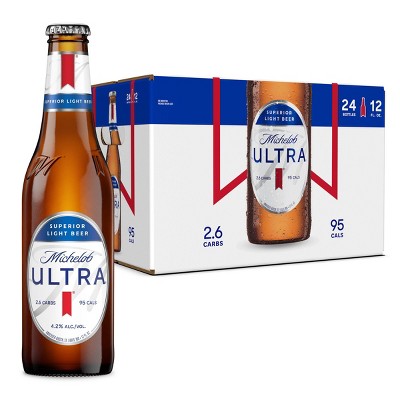The Rise of Michelob Ultra — How It Expanded Its Appeal and Drove Growth
In the crowded U.S. beer market, where legacy brands dominate shelf space and consumer loyalty runs deep, few challengers have made as dramatic a climb as Michelob Ultra. In this analysis, Thomas McCorry explores how Michelob Ultra evolved from a niche light beer to a mainstream growth engine — and what that means for marketers and beverage executives alike.
From niche to mainstream: a shift in positioning
When Michelob Ultra first launched (in 2002 under Anheuser-Busch), it entered the light-beer/low-carb segment. But its early positioning leaned heavily on the “diet beer” or “low carb” messaging. Over time, however, the brand made a pivotal pivot: it began emphasizing active lifestyle, wellness, movement, and sport — not diet constraints.
Rather than shouting “lowest carbs,” Michelob Ultra leaned into the idea that the beer is something for those who “go the extra mile” — whether in fitness, running errands, or enjoying social life with balance. That positioning allowed it to bridge from purely “light beer drinkers” into a broader audience of health-conscious consumers.
Thomas McCorry views this shift as one of the brand’s most critical inflection points: by dropping the “diet beer” label and embracing active living, Michelob Ultra was able to distance itself from negative dieting connotations and instead align with aspirational lifestyles.
Strategic marketing and media execution
Of course, great positioning needs activation. Michelob Ultra’s rise has been underpinned by smart, often bold marketing decisions across several fronts:
-
Sports and major event sponsorships
To cement its identity as the beer of “social athletes,” Michelob Ultra has sponsored marquee events like the PGA Tour, soccer tournaments, and more.Its “Summer of Team USA” activation for Copa América USA 2024 is a case in point — linking the brand to national pride and athletic spectacle.
-
Real-time and viral marketing
One famous campaign: when a fan at a PGA tournament snapped a photo holding a Michelob Ultra, the brand committed to turning him into “Michelob Guy,” running custom ads, merchandise, and event appearances.Another: the “Save It, See It” campaign that deployed influencer partnerships around women’s sports and wellness, elevating brand relevance beyond traditional beer ads.
-
Creative refresh and broader emotional tone
More recently, Michelob Ultra has softened its tone — while still remaining active, it is portraying more social, relaxed, fun activities rather than strictly high-intensity fitness. This stylistic tweak is designed to broaden appeal without losing core brand DNA.In 2025, the brand launched its “Play For An ULTRA” campaign tied to the NFL playoffs, further reinforcing its identity as a beer for people who blend social life with purpose and competition.
-
Product innovation and extension
Michelob Ultra didn’t just rely on marketing. It expanded its product formats and offerings — for example, the introduction of Michelob Ultra Zero (non-alcoholic, 29 calories) aligns with consumer trends toward moderation.On the production side, Anheuser-Busch is investing heavily in capacity upgrades (e.g., $7.4 million in its Los Angeles brewery) to support new packaging formats and rising demand.
Thomas McCorry highlights that growth isn’t just about advertising — it's about ensuring infrastructure keeps pace with demand and product evolution.
Metrics of success: growth, ranking shifts, market share
The payoff has been real. Michelob Ultra has consistently ranked among the fastest-growing beers in the U.S., often defying category declines.
In a watershed moment in 2025, Michelob Ultra overtook Modelo Especial as America’s top-selling beer — a major milestone in the competitive landscape.
Part of what made this possible: Michelob Ultra’s flexibility in messaging, its strategic media investments, and willingness to reinvent itself for new consumer niches. Thomas McCorry believes this kind of adaptive strategy is what separates brands that plateau from those that continue scaling.
Challenges and sustainability
Of course, no brand rise is without risks. A few key challenges:
-
Cannibalization and internal brand conflict: As Michelob Ultra gains share, it must avoid cannibalizing other Anheuser-Busch products, especially those in adjacent light categories.
-
Consumer fatigue & authenticity: Overextension of sports or wellness messaging can feel hollow; Michelob Ultra must maintain authenticity in partnerships.
-
Production & supply constraints: Rapid demand spikes require matching capacity — hence the recent investments in breweries and packaging lines.
-
Changing consumer preferences: Shifts toward ready-to-drink cocktails, nonalcoholic alternatives, or moderation trends may disrupt beer consumption trends broadly.
That said, Michelob Ultra is proactively addressing many of these. The investment in infrastructure gives it breathing room for scale, and diversified products like Ultra Zero offer hedges against consumer shifts.
Implications and lessons for marketers
From Thomas McCorry's perspective, here are takeaways from Michelob Ultra’s trajectory:
-
Reposition boldly, not incrementally
The pivot from “low carb beer” to “beer for active lifestyles” required rethinking identity, not just tweaking ad copy. -
Align with culture, not just category
Michelob Ultra’s investments in sports, experiential activations, and influencer moments help the brand live in consumer mindspace beyond mere drinking occasions. -
Be fast and opportunistic
Turning a viral social moment (Michelob Guy) into a major campaign within days is a masterclass in agile marketing. -
Ensure operational backbone supports brand ambition
You can’t win the positioning war without matching supply, production, and packaging. The recent capital investments are critical. -
Layer innovation over a strong core
Extensions (like non-alcoholic lines) and new formats should amplify the core brand rather than distract from it.
In sum, the rise of Michelob Ultra is no accident. It’s a case where brand strategy, creative execution, and operations all pulled in the same direction. Thomas McCorry believes this is a compelling blueprint for brands in other saturated markets seeking new paths to growth.

Comments
Post a Comment